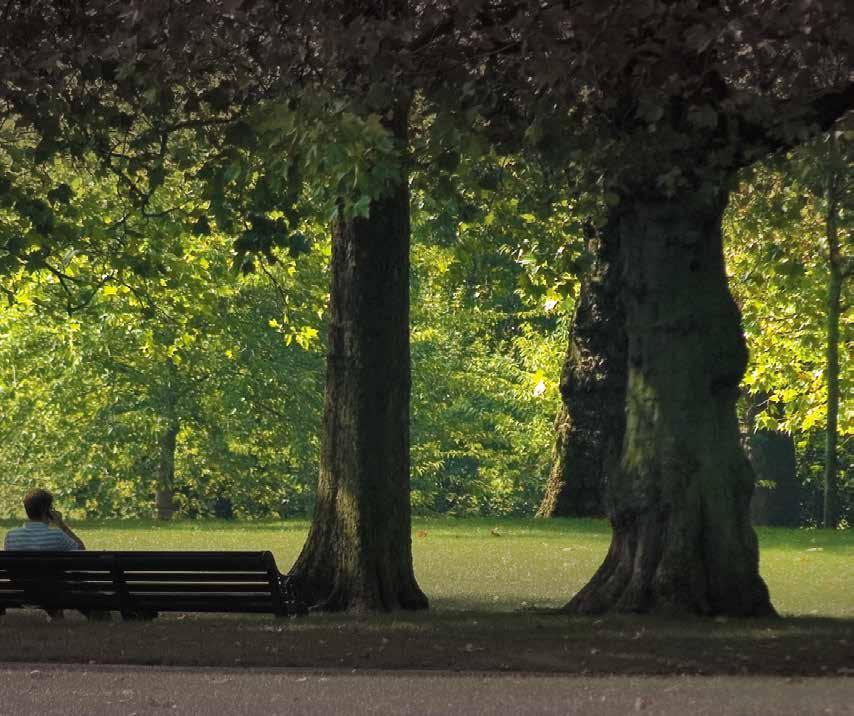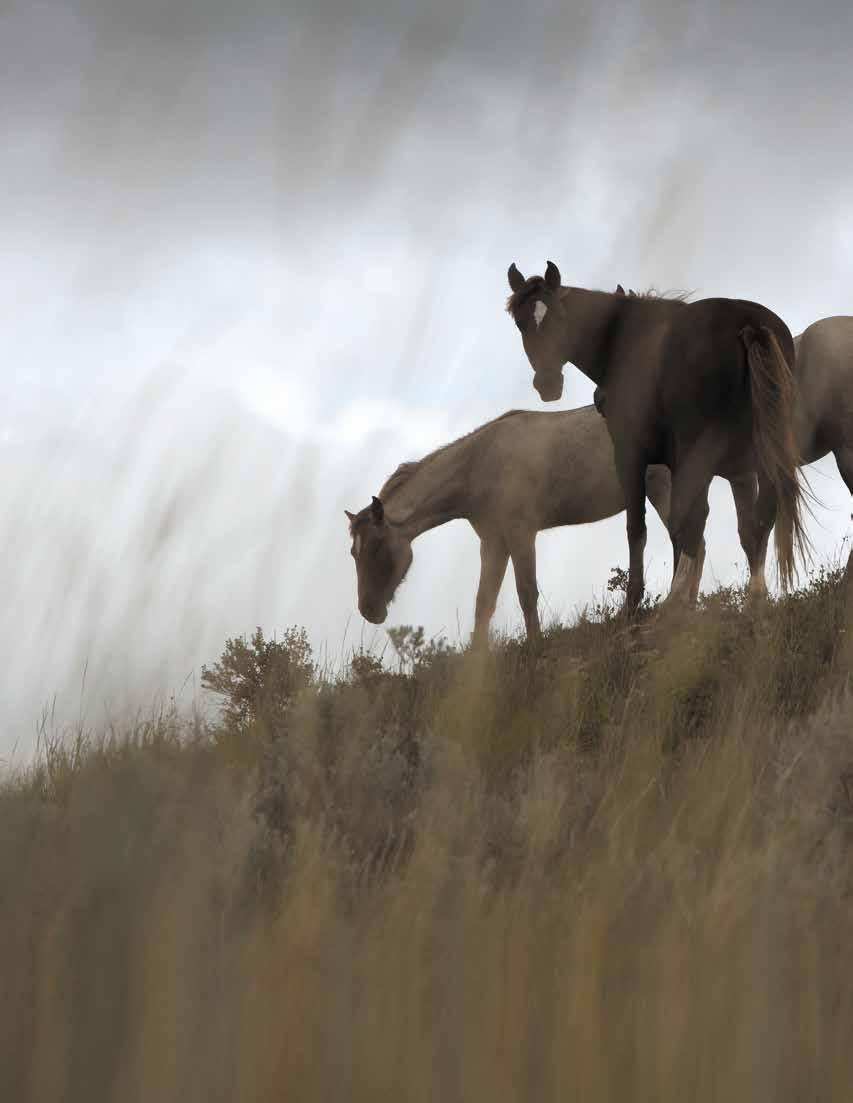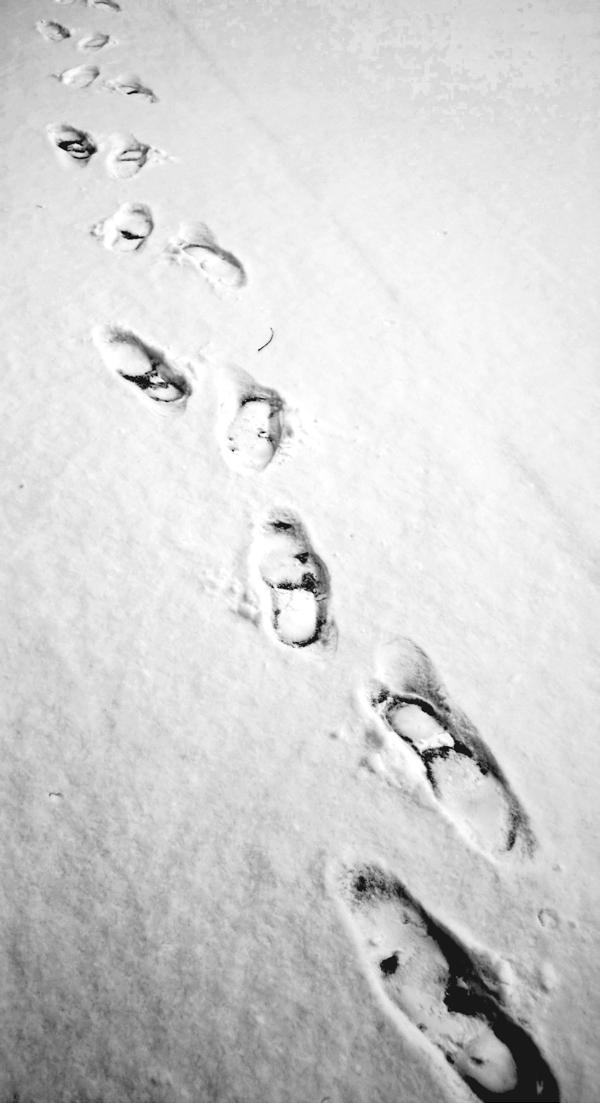
16 minute read
Refusing Nostalgia: On Geographical Flight and Cultural Amnesia
by Debra Marquart
As a child, I was a map gazer. I’d set my small finger down in Alsace, in that blessed valley of castles, church spires, vineyards, and rolling fields of sunflowers between the Vosges Mountains and the Rhine river, then I’d tramp my fingers like a small scissors eastward through Germany. I’d touch down on the shore of the Danube and trace its long artery, the eastern route my ancestors took in 1803 to reach Odessa on the Black Sea. I longed to feel under my fingertips the slow progress of the overland caravan, the teams of oxen, the pots and pans, the crying babies—a 1,900 mile journey—just to reach the acres of unbroken steppe land near the Black Sea that had been offered to my ancestors by Czar Alexander I.
Advertisement
Odessa! Just the name conjured images. I was growing up in North Dakota, in a small town named Napoleon, which was near a bigger city named Bismarck (equally evocative names), but Odessa sounded to me like destination number one, conjuring images of poor Odysseus trying and not trying to make it home from the Trojan Wars. And the Black Sea, which was nothing like the Red Sea or the Dead Sea, but black, meaning the unknown, possibly danger. I admired the mettle of my ancestors. They had walked through the Black Forest to get to the Black Sea.
They made homes for themselves in the villages they created in South Russia in 1803, surviving the trauma of flight and exile from their original homeland in Western Europe, and they lived in those villages near the Black Sea as an ethnic minority for almost three generations. The promises they were given by the Czar— freedom from taxation, freedom from military service, the freedom to keep their own language, religions, and schools—held for about eighty years.
When some of those promises were withdrawn and young men from the villages were forcibly conscripted, my great-grandparents and their young children fled Russia and immigrated to America between the years 1886 and 1911. Answering the invitation for free land through the Homestead Act, they repeated the pattern of flight, exile, and resettlement in the Dakota Territory. This ethnic group, now sprinkled through much of the central United States, is called the Germans-from-Russia. The migrations that mark my ethnic group are preserved in their hyphenations, but the fact of their arrival in America was never codified in language. We never became the “Germans-from-Russia Americans,” for example. Some stories are too complicated to tell.
As a young girl, growing up in the 1950s and ‘60s in North Dakota, I was only vaguely aware of this ethnic history, but even the whiff of trauma and uprootedness was glamorous, especially against the everyday sameness of our hemmed-in farming enclave. Although Napoleon was a small Midwestern town, it often felt eerily like an 18th century European village that just happened to have televisions and automobiles. My grandfather made sausage and rhubarb wine in the basement. In the root cellar were rows of gleaming jars full of pickles and beets. Chores had to be done, and animals needed tending. My father’s idea of a family outing was to pile all of us in the car on Sunday evenings and drive us around to look at the crops.
In this village of my hometown, rotund old men sat around on park benches gossiping with each other in German, and whiskery grandmothers endlessly baked and canned and sewed and gardened. There was a lot of church-going and polka-dancing. The older people spoke an archaic dialect of German, mixed with a broken English. In the local cafes, along with roast beef dinners or hamburgers and French fries, on the menus were choices like knephla soup, sauerkraut, and fleischkuekle.
When I would ask my grandma Geist about the village in South Russia where my grandfather had emigrated from (one had to address all questions to Grandma Geist, because Grandpa Geist was notoriously quiet), Grandma would say, “We all came from the same place.” Hardly the stuff of legends. I wanted the story of flight—the village he had left as a young boy under cover of darkness, the stale bread passed between many hands, the stony fields traversed in the middle of the night. I wanted the story of arrival—the storm-filled ocean passage, the train ride slicing across the North American continent, the first sight of the muddy streets of Eureka, the trading post town in Dakota Territory where our people purchased carts and oxen to transport themselves to their remote land claims yet farther in the north.
Instead, at gatherings where my grandparents would sit around and play cards with other couples they had known since youth, my grandmother might tell a joke in English, and then turn to Grandpa and say the punch line to him, in German. All the old people would laugh and rock in their seats. When I protested—for I didn’t know German, we were encouraged to learn only English—my grandmother would insist that it was only funny in German. “There’s no way to say it, in English,” she would explain.
Some small detour of meaning had occurred, something lost between the tongue and the brain. Even then, I felt myself cut loose on the ice floe of English—all the fun and forbidden stuff was happening in another language. But now that they are all long gone, I realize that it was they who were drifting away on the ice floe of German. Now I am left behind, a fully vested American, stranded without them on the mainland of English.
They had little of the backward glance in them, my maternal grandparents. I would go so far as to say they refused nostalgia. The word “nostalgia,” has its origins in Greek words, but not in Greek culture. Cobbled together from two Greek roots—nostos (meaning “return” or sometimes “journey”) and algeo (meaning “pain,” “sickness,” or “sorrowful”), the term “nostalgia,” was coined in 1688 by the Swiss Doctor, Johanes Hofer, to describe the “sad mood originating from the desire to return to native land.” In The Future of Nostalgia, Svetlana Boym reports that Hofer first documented this phenomenon in various people displaced in the seventeenth century—“freedomloving students from the Republic of Berne studying in Basel, domestic help and servants working in France and Germany, and Swiss soldiers fighting abroad.” Dr. Hofer observed that this new illness caused the afflicted to lose touch with the present, resulting in the “longing for the native land to become their single-minded obsession.” The patients’ symptoms included a “lifeless and haggard countenance,” an “indifference toward everything,” and “a confusion between past and present, real and imaginary events.”
According to Boym, Swiss scientists found that the simplest sensual cues of home such as the tune of folk melodies of Alpine valleys were likely to trigger a “debilitating nostalgic reaction in Swiss soldiers.” Military superiors were forced to prohibit the soldiers from playing, singing, or even whistling native tunes. Later cures for bouts of nostalgia were more radical. Boym reports that in 1733 when the Russian army was stricken by nostalgia just as it ventured into Germany, the commanding officers announced that the “first to fall sick [with nostalgia] would be buried alive,” a practice which seemed to have an immediate palliative effect on the sufferer.
In the case of all my great-grandparents and my two grandfathers, both of whom immigrated to the U.S. as young boys, I could theorize that the hardship of emigration and the privation they experienced after arrival was enough to shake the nostalgic impulse right out of them. But that remains a theory, because I have no records about the quality of their lives—no letter collections, no journals, no family stories. In the absence of information and into that negative space, it’s difficult to formulate a theory. Perhaps the silence speaks for itself.
When I go to the state archives for historical information about the early days of European settlement, I find that archival records do exist. Primary among them are the 1930s WPA (Works Progress Administration) records that employed writers to travel around counties in North Dakota and interview the remaining immigrant generation. A WPA interview form was utilized that asked general questions about family data (names/birthdates), date and year of passage, name of ship, cost of ticket, etc. A general prompt at the end of the interview form invited the interviewee to provide supplemental information in various categories such as “political events” (county seat fights, party caucuses, vigilantes), “social events” (weddings, dances, games), “industries” (trapping, soap-making, picking buffalo bones), as well as a “miscellaneous” category that included “frost, hail, drought, cyclones, hoppers, blizzards, prairie fires, epidemics, Indian scares, claim jumpers, and etc.”
The extensiveness and specificity of this final category leads one to assume there was a great deal of miscellaneous trouble to be found in the early days of the region. But what’s even more striking about the WPA interview documents is the fact that while the interviews with Irish, English, German, Norwegian, and Swedish immigrants are often full of lively detail, the interviews with the German-Russian immigrants tend to be shorter and filled with cursory details. One WPA worker jots a field observation at the end of a report: “I can get very little information from this couple. When I ask them what they do in their leisure time, they reply they have no leisure time. … I can only assume they believe me to be an insurance salesman.”
All the WPA interviewees were invited to include a supplemental narrative relaying additional anecdotes about early pioneer life. These were appended to the back of the formal WPA interview report. Perhaps it goes without saying that most of the German-Russian interviews do not include additional material. By contrast, one loquacious interviewee, Peter Borr, who lists Michigan, Holland, and The Netherlands as the origin points of his family’s multiple migrations, also includes a forty-eight page “Pioneer History.”
The most stunning section of the document, however, features an eight-page report titled “North Dakota Sudden Deaths,” in which Mr. Borr has taken it upon himself to note the details of 207 sudden or unusual deaths, such as the following, all of which occurred in the region between the years of 1886 and 1936.
1886: John Robinson shot by Carlson near Apple Creek.
1888: Bollinger kills self out of fear of arrest for not paying debts.
1891: James Findley shoots wife, then self to death near Winchester.
1888: Grens frozen to death east of Mound City.
1896: Young man killed by lightning while cultivating corn near Gackle.
1889: C. Hanson shoots his head off near Hull.
1898: Mrs. Reynolds found dead in shallow pond, shortly after Mr. Reynolds was found shot through the heart, lying on a log at Omio.
1913: L. Tinholt mysteriously disappears at his opera house, while it burns.
1927: Son of Mitchell dragged to death by pony nine miles north of Herreid.
1929: J.J. Fenelon shoots self at Pollock.
1929: Becthold shot dead at Mobridge.
1923: Three children freeze to death under sleigh as they returned from school in storm.
1918: Jack Bickle dies from Dr. Till’s treatments.
1924: M. Bickle crushed under wagon at Artas.
1920: C. Vorlander shoots self on daughter’s grave at Eureka.
Just this sampling of the death entries, simply stated in one-line summaries, reveals the violence, hardship, and trauma of the early days. Although my greatgrandparents were immigrants and my grandparents were children and young adults during these years, none of these stories were told or remembered by the time I was growing up near or around the very place where these tragedies occurred. In fact, you wouldn’t have had a clue that the older people of these towns had known and lived through harsh times. As I read these reports, I understand that they were engaged in a profound and willful act of silencing, an immaculate execution of cultural amnesia.

Instead of dwelling on the dead and the past, it seems they turned their attentions forward to us, their grandchildren, and outward, to the land itself. “Never let the land go out of the family.” This is a caution I heard often and always growing up. As the owners of the center farm, the original homestead, my family has become the caretaker of a legacy that’s important, if only conceptually, to cousins and uncles and aunts who live in places far and wide.
But what makes a piece of land go solid under your feet? How to explain this nostalgia for land that overtakes otherwise pragmatic people? “Archaic man saw settled land as sacred and the wilderness as profane,” Mircea Eliade observed in The Myth of the Eternal Return. Wilderness or uncultivated regions, to the mind of immigrants were part of the undifferentiated void, something that called out to be shaped and molded to our needs.
Eliade theorizes that when our ancestors performed rites of cultivation such as plowing, seeding, and finally inhabiting a piece of land, they saw themselves as “cosmicizing” it and making it sacred by matching its physical shape to the cosmic model or ideal that existed if only in their imaginations. According to Eliade, people who settled unbroken land for cultivation believed themselves to be performing something akin to an act of creation. Like God, they were doing elemental things—separating the light from the dark, the earth from the sky, the land from the ocean. They were making order from chaos.
At that moment, according to Eliade, no matter how difficult the work, they felt their lives take on a greater resonance. Their actions connected them to ancient, ongoing patterns and through these gestures they felt their connection to a chain of being that stretched back far beyond themselves to known and unknown ancestors.
Family land, by association, becomes the locus, the site that records the sacrifices and successes of our ancestors. All the details of the people and the hardships become conflated across centuries, folded in, tucked away and eventually forgotten by succeeding generations. After that general forgetting is complete, only the fact of the land remains, a geographical reminder connecting us to all those who came before.
This fusion of home and land in the minds of those who remain is often expressed in Willa Cather’s O Pioneers! People are fleeting and ephemeral, she observes, but the land holds the future. “How many of the names on the county clerk’s plat will be there in fifty years?” Cather writes. “We come and go, but the land is always here. And the people who love it and understand it, are the people who own it—for a little while.”
And so as I try to approach describing it, the ache for that place I was born to and these people I was bound to—whole generational waves of family members who have disappeared from my view—the ache only increases even as the image fades. And so I realize that I am the one who suffers most acutely from nostalgia, not only from the loss of that feeling of belonging that they created for me as a child, but also from regret that the illusion of home they presented felt so solid and claustrophobic to me as a child that all I could do was bristle against it, then engineer my escape, sealing my separation from the people and place that now as an adult I am compelled to haunt in my imagination, returning again and again.
Perhaps this is just the natural condition of aging and loss. My grandparents had the doubly-complex dilemma of having a past that was not only figuratively a foreign country—the natural foreign country that all childhoods are when we glance back at them from the far distance of our later years—but also a past that was literally a foreign country, one about which they did not seem to have memory or language to share with us. And so I experience nostalgia for them in multiple layers—ache for my own foreign country of childhood and ache for all the foreign countries of their unique history that disappeared unarticulated on my grandparents’ foreign tongues.
Now I spend my time searching through old newspapers, written in languages I do not know, through letter collections and archives in quiet library aisles. I visit graveyards, nursing homes. I smile at old people I see in the street, hoping they will tell me something about the old days. I have an obsessive habit of scanning the faces of modern-day refugees I see in news reports on CNN, hoping to get a glimpse of the familiar, a long lost grandparent.
Most of the time it’s sad and lonely work, this reclamation of the past, and then sometimes you get lucky. A few years ago, I visited older relatives and asked them questions about the old days. Usually my questions were met with the same silences and suspicions as the WPA workers likely faced when they traveled around for the interview project in the 1930s.
Then one day, during a very ordinary conversation at my older cousin, Tony’s, kitchen table, he began to tell me about the milk letters he remembered that had come for my great-grandfather from the brothers and sisters he had left behind in the Black Sea villages when they fled.
Tony was only a boy at the time, but he remembered that the letters from Russia were written in two layers, the first of which was visible to the eye, penned in ink or pencil, reporting mundane news from the village (births, natural deaths, weddings). Well into the 1920s, my great-grandfather received these letters from those he had left behind in Russia. By then, he was a prosperous North Dakota landowner, but the news from Russia only grew more troubling.
The second layer of the letter, Tony said—invisible and written in milk between the ink lines—was blown dry on the breath of the worried author as if to make it undetectable to the eyes of the government censor. This second layer, the milk letter, recounted the horrors of life under Communism. It begged for money and detailed reports of mass starvation and farm collectivization in my great-grandfather’s home village. The milk letter told of grave robbing, church stripping, and of sons and fathers herded up and taken either to servitude in the Russian military or to forced labor camps in Siberia.
My older cousin, Tony, remembers my great-grandfather sitting on a stool in front of the north window of our farmhouse, a stream of tears flowing down his otherwise stoic face, as he held the shaking letter up to the sunlight to illuminate the lines written in milk. A few years later, Tony recalls, in the early 1930s, the letters stopped coming and all talk of Russia ceased.
I grew up in that farmhouse in the 1960s. I sat at that north window, most often scanning the highway for the bus or the carload of friends that was coming to take me for some adventure in town. One road led to another, all of them away. But I’m ready now to take up my spot at that window, to hold everything up to the fiercest light, to report the invisible layers of stories I find hidden there.
Debra Marquart is a professor of English in the MFA Program in Creative Writing & Environment at Iowa State University. Her North Dakota memoir, The Horizontal World: Growing Up Wild in the Middle of Nowhere, was awarded the 2007 PEN USA Creative Nonfiction Award and received a New York Times Editors’ Choice commendation.










